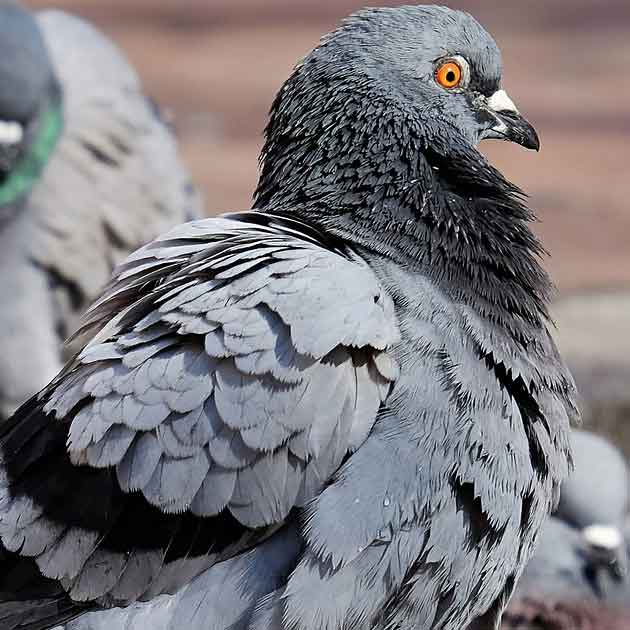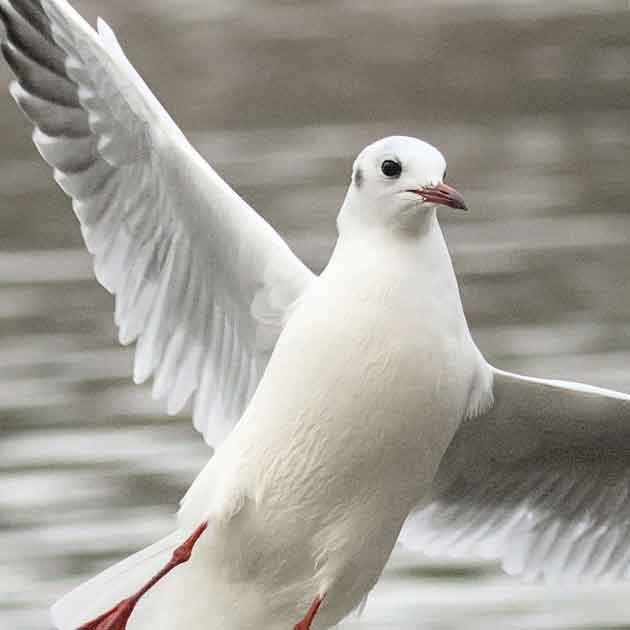Fireworks, drones, and habitat relocation projects are among the ways that Air Force biologists are fighting the expensive and potentially deadly problem of bird strikes.
Kory McLellan has spent more than 10 years monitoring birds at airports and air bases around the country, even in warzones in Afghanistan.
He manages what's known as a Bird/Wildlife Aircraft Strike Hazard or "BASH" program at MacDill Air Force Base. It's part of a partnership the base has with the U.S. Department of Agriculture's Wildlife Services program.
McLellan's mission is to drive around the base clearing unwelcome winged visitors to avoid collisions with aircraft. His weapons? Lasers, decoys, and a gun that shoots fireworks.
On a recent morning at MacDill, a group of turkey vultures showed up, one flying directly over the airfield.
McLellan moved his car so that he was behind the vulture and fired off a pyrotechnic. His goals are to coax the vulture to move away from the airfield without harming the bird.
"I don't want to hit a pyrotechnic to force him back towards the runway because we've got an aircraft over there," McLellan said.
At the sound of the firework, the spooked vulture took off, flying away from the airfield and toward Tampa Bay.
"Get him going!" McLellan said with pride.
This was a fairly light day for McLellan, so aircraft operations at MacDill continued without interruption.
When more birds congregate near the airfield, the military restricts training exercises. Large flocks mean no take-offs or landings unless a mission is deemed worth risking a damaging strike.
At MacDill, those situations are most likely to occur during fall migration, when thousands of birds fly south, or during the rainy summer season, when flooded greenspace attracts insects that birds like to eat.
The delays may be an inconvenience at home, but in a place like Afghanistan, even a half-hour delay could pose a threat to security.
"With it being in an active warzone, they're flying missions daily," McLellan said. "The need for operational readiness and the need to be able to fly those missions unimpeded from wildlife was extremely important."
Kory McLellan, who manages the Bird/Wildlife Aircraft Strike Hazard program manager at MacDill Air Force Base, observes a double-crested cormorant near the flightline.
CREDIT ADAM R. SHANKS / U.S. AIR FORCE
A "little pop," then a familiar smell
Kenneth Cotter, a Flight Safety Officer at MacDill, said pilots may gripe about bird-related flight restrictions, but know they're in place for a reason.
"Everyone knows safety is the number one concern, and if it becomes a situation where it's severe, no one wants to jeopardize themselves, their aircrew members, or the passengers on board for a little convenience in getting the aircraft on the ground," he said.
The pilot of 10 years still remembers the first time his plane struck a bird.
"We heard a little pop," he said. "A couple seconds to a minute later, it kind of gives off the odor of fried chicken. That is a tell-tale sign that you have indeed struck a bird."
After every strike, the Air Force requires the bird remains, known in military-speak as "snarge," to be shipped off to the Smithsonian Institution's Feather Identification Lab to determine the species.
"Especially when you start having damaging bird strikes, you really want that information," McLellan said. "What this does is it allows us to see what species we're having issues with, that we're striking. That data allows us to know what we need to put our efforts and our time towards."
Once the remains are collected, mechanics such as Sgt. Alex Conatser come in to inspect damage to the jet engines.
Even a strike that doesn't cause significant problems with the aircraft will still cost time. Conatser said an engine will be down anywhere from four to eight hours after a strike for cooling and inspection.
He said when it comes to bird strikes, MacDill is in better shape than some other bases because it's home to mostly large aircraft like KC-135's, which are re-fueling tankers.
"They're supported with a lot more structure, so the birds don't really damage us as much as you might think," Conatser said. "Whereas the smaller aircraft like the fighters, things like that, when they get hit by a bird there is a bigger impact."
The Department of Defense says each year thousands of bird strikes cause more than $75 million in damage to its aircraft.
And then there are the losses you can't put a price tag on: dozens of service members have been killed from strikes.
McLellan cited a particularly deadly incident in 1995 at Elmendorf Air Force Base in Alaska. A large aircraft hit a flock of Canada geese on takeoff and crashed, killing all 24 people on board.
"That was the most significant Air Force wildlife mishap on record," he said.
McLellan said in the decades since, wildlife mitigation in the military has improved dramatically. Beyond just shooting fireworks, he and his colleagues now manage long-term projects like shifting habitats away from bases.
And new technology could also help. The Federal Aviation Administration is looking at using radar to spot birds.
McLellan and his team recently used GPS trackers to study vultures, which Air Force-wide are some of the most hazardous birds to aircraft. He is continuing to collect data from those trackers in order to better understand the vultures' migration patterns.
There are even drones designed to look like bird predators.
But for now, it's mainly up to humans like McLellan to get the job done.
This story was produced by the American Homefront Project, a public media collaboration that reports on American military life and veterans. Funding comes from the Corporation for Public Broadcasting.













